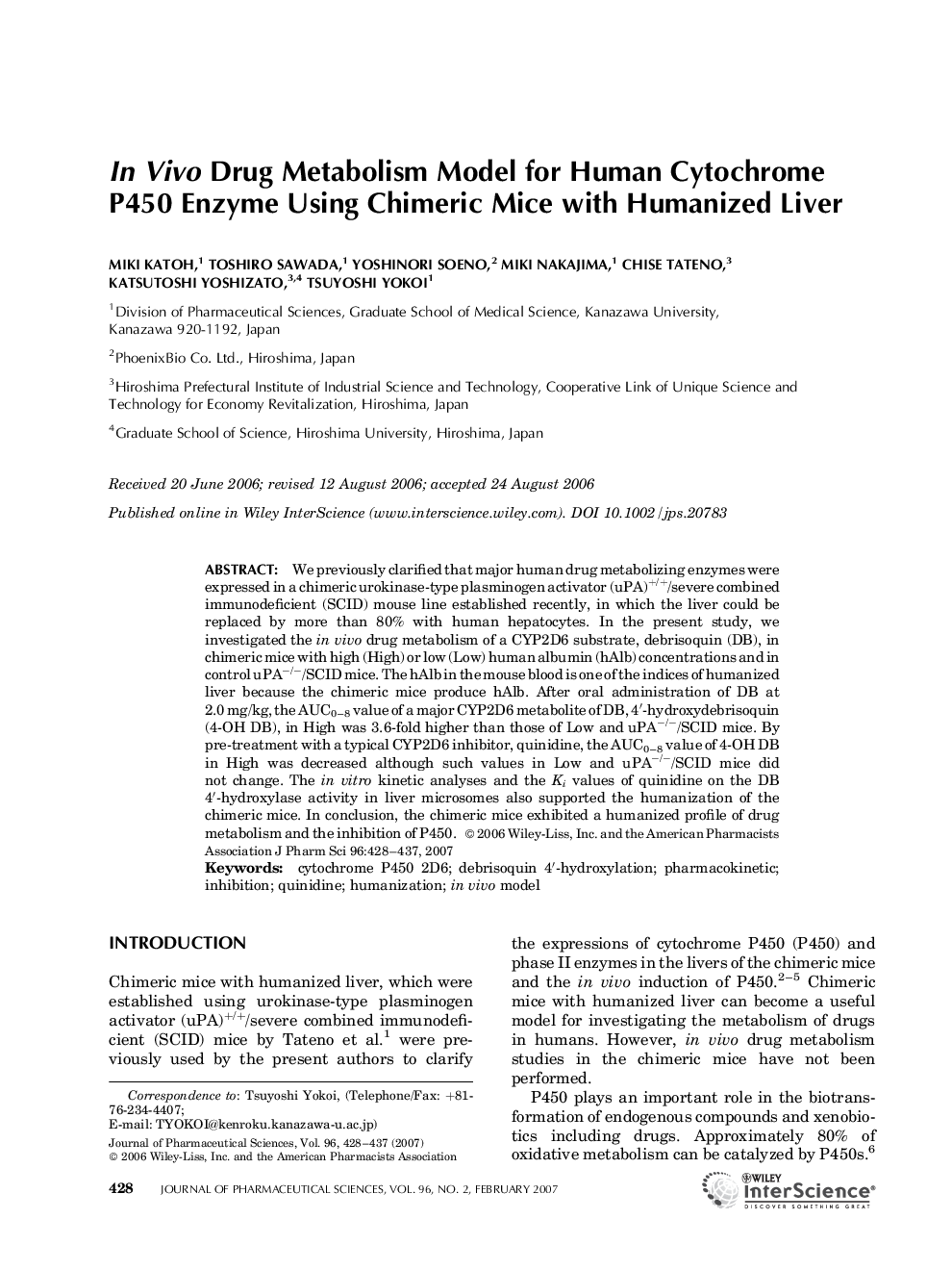| Article ID | Journal | Published Year | Pages | File Type |
|---|---|---|---|---|
| 2487047 | Journal of Pharmaceutical Sciences | 2007 | 10 Pages |
Abstract
We previously clarified that major human drug metabolizing enzymes were expressed in a chimeric urokinase-type plasminogen activator (uPA)+/+/severe combined immunodeficient (SCID) mouse line established recently, in which the liver could be replaced by more than 80% with human hepatocytes. In the present study, we investigated the in vivo drug metabolism of a CYP2D6 substrate, debrisoquin (DB), in chimeric mice with high (High) or low (Low) human albumin (hAlb) concentrations and in control uPAâ/â/SCID mice. The hAlb in the mouse blood is one of the indices of humanized liver because the chimeric mice produce hAlb. After oral administration of DB at 2.0 mg/kg, the AUC0-8 value of a major CYP2D6 metabolite of DB, 4â²-hydroxydebrisoquin (4-OH DB), in High was 3.6-fold higher than those of Low and uPAâ/â/SCID mice. By pre-treatment with a typical CYP2D6 inhibitor, quinidine, the AUC0-8 value of 4-OH DB in High was decreased although such values in Low and uPAâ/â/SCID mice did not change. The in vitro kinetic analyses and the Ki values of quinidine on the DB 4â²-hydroxylase activity in liver microsomes also supported the humanization of the chimeric mice. In conclusion, the chimeric mice exhibited a humanized profile of drug metabolism and the inhibition of P450. ©2006 Wiley-Liss, Inc. and the American Pharmacists Association J Pharm Sci 96:428-437, 2007
Related Topics
Health Sciences
Pharmacology, Toxicology and Pharmaceutical Science
Drug Discovery
Authors
Miki Katoh, Toshiro Sawada, Yoshinori Soeno, Miki Nakajima, Chise Tateno, Katsutoshi Yoshizato, Tsuyoshi Yokoi,
